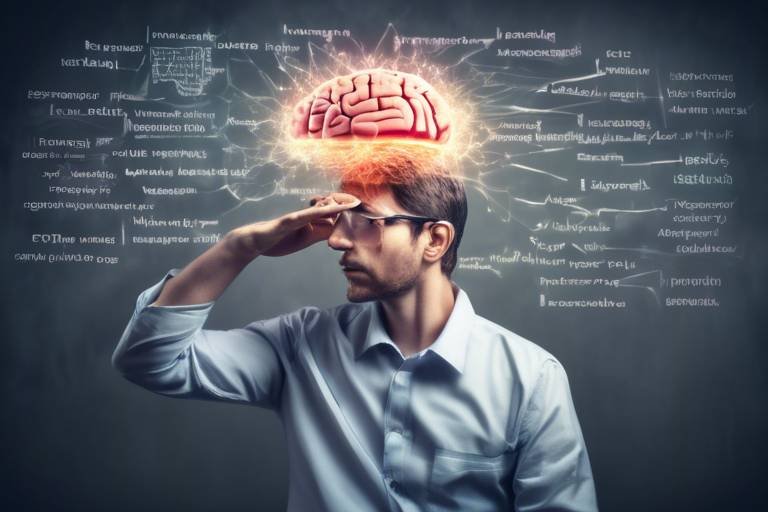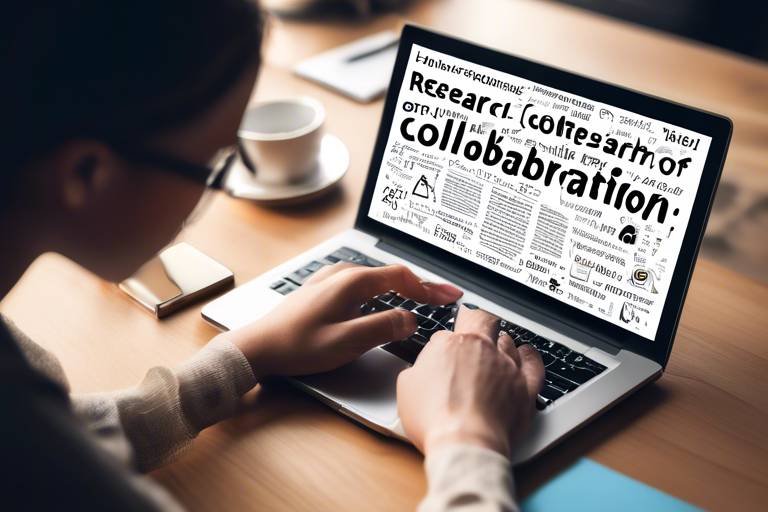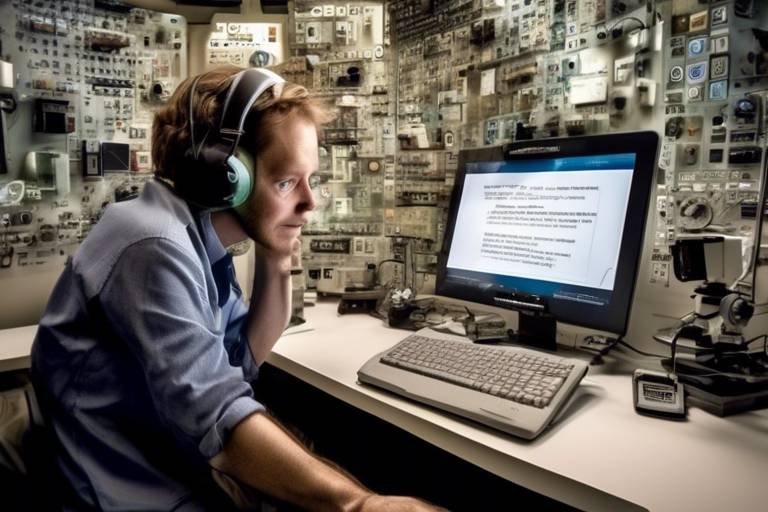The Role of Documentary Analysis in Historical Research
Documentary analysis plays a pivotal role in the realm of historical research, acting as a bridge that connects the past to the present. It allows researchers to delve into the rich tapestry of human experience, uncovering insights that are often hidden within the pages of forgotten documents. Imagine standing in a dusty archive, surrounded by stacks of letters, official records, and newspapers, each piece whispering stories of lives lived and events that shaped societies. This process of examining historical documents is not just about gathering information; it’s about piecing together a narrative that helps us understand the complexities of our world.
At its core, documentary analysis involves a meticulous examination of various types of documents, extracting meaningful data that can illuminate the context of historical events. This method is distinct from other research methodologies in history, such as oral history or archaeological studies, which may rely on personal testimonies or physical artifacts. Instead, documentary analysis focuses on written records, providing a textual foundation for understanding the past. It’s like being a detective, sifting through clues to construct a coherent story that reflects the realities of different eras.
As we embark on this exploration of documentary analysis, it’s essential to recognize its significance not only in academic circles but also in everyday life. Whether you're a student, a history buff, or simply curious about the past, understanding how documentary analysis works can enrich your appreciation of historical narratives. The documents we analyze serve as windows into the lives of individuals, societies, and cultures, allowing us to draw connections between past and present. So, let’s dive deeper into the methods, challenges, and contributions of documentary analysis in historical research.
Documentary analysis is defined as the systematic examination of historical documents to extract data and insights. This method serves a dual purpose: it not only helps historians reconstruct events but also allows them to interpret the meanings behind those events. Unlike other methodologies, which may focus on physical evidence or oral accounts, documentary analysis emphasizes the importance of written records. By engaging with these texts, researchers can uncover biases, perspectives, and contexts that are crucial for a comprehensive understanding of history.
In the following sections, we will categorize the various types of historical documents used in research, explore the differences between primary and secondary sources, and discuss the methodologies that guide the analysis of these documents. Each of these elements contributes to a richer understanding of how we interpret the past, making documentary analysis an invaluable tool in the historian's toolkit.
Historical research relies on a plethora of documents, each offering unique insights into the past. The most common types of documents include:
- Letters: Personal correspondence that reveals the thoughts and feelings of individuals during specific historical moments.
- Official Records: Government documents, such as laws, treaties, and census data, that provide a framework for understanding societal structures.
- Newspapers: Periodical publications that capture the zeitgeist of their time, reflecting public opinion and major events.
Each of these document types contributes to our understanding of historical contexts. For example, letters can provide intimate insights into personal experiences, while official records can illustrate broader societal trends. By categorizing these documents, researchers can better appreciate their unique contributions to historical narratives.
In documentary analysis, distinguishing between primary and secondary sources is crucial. Primary sources are original documents created during the time under study, such as diaries, photographs, and official records. They offer firsthand accounts of historical events, allowing researchers to engage directly with the past.
On the other hand, secondary sources interpret and analyze primary materials. Examples include biographies, critiques, and scholarly articles. These sources provide context and analysis, helping to shape our understanding of historical narratives. Understanding the characteristics and roles of both types of sources is essential for effective documentary analysis.
Primary sources are the lifeblood of documentary analysis. They include:
- Diaries: Personal reflections that offer a glimpse into the daily lives and thoughts of individuals.
- Photographs: Visual documentation that captures moments in time, providing context and emotional depth.
- Official Documents: Legal texts, treaties, and government records that outline the frameworks of societies.
These examples highlight the significance of primary sources in research, as they provide direct access to the voices and experiences of those who lived through historical events.
Secondary sources enrich our understanding of history by interpreting primary materials. Notable examples include:
- Biographies: Detailed accounts of individuals' lives that contextualize their experiences within broader historical narratives.
- Critiques: Analyses of historical events, providing perspective and interpretation.
- Documentaries: Visual representations of history that synthesize primary sources into compelling narratives.
These secondary sources are essential for shaping our understanding of historical events, as they provide the analysis and context necessary to interpret the wealth of information found in primary materials.
Documentary analysis employs various methodologies to guide researchers in their examination of documents. These methodologies can be broadly categorized into qualitative and quantitative approaches. Qualitative methods focus on interpreting the meanings behind documents, often emphasizing context, themes, and narratives. This approach is particularly useful for understanding the complexities of human experience.
In contrast, quantitative methods involve analyzing data from documents in numerical terms, such as frequency counts or statistical analysis. This approach can uncover patterns and trends that may not be immediately apparent through qualitative analysis alone. By employing a combination of both methodologies, researchers can gain a comprehensive understanding of historical documents and the narratives they convey.
Despite its significance, documentary analysis is not without its challenges. Researchers often encounter obstacles such as bias and accessibility when conducting their analyses. Bias in historical documents can distort interpretations, leading to skewed understandings of events. It's crucial for researchers to identify and mitigate bias to ensure accuracy in their analyses.
Additionally, access to historical documents can be limited by various factors, including geographical constraints, preservation issues, and legal restrictions. These challenges necessitate innovative strategies for locating and retrieving essential documents, ensuring that researchers can engage with the full spectrum of historical evidence.
Bias is an inherent challenge in documentary analysis. Historical documents often reflect the perspectives of their creators, which can lead to skewed representations of events. Researchers must be vigilant in identifying potential biases, asking questions like:
- Who created this document?
- What was their purpose?
- What perspectives might be missing?
By critically engaging with documents and considering the context in which they were created, researchers can mitigate bias and strive for a more accurate interpretation of historical events.
Accessing historical documents can be a daunting task for researchers. Various factors, such as the location of archives, preservation conditions, and legal restrictions, can limit access to essential materials. To navigate these challenges, researchers often employ strategies such as:
- Utilizing digital archives and databases to locate documents remotely.
- Collaborating with institutions that house historical collections.
- Networking with other researchers to share resources and knowledge.
By adopting these strategies, researchers can enhance their ability to find and analyze historical documents, ultimately enriching their understanding of the past.
Advancements in technology have revolutionized the field of documentary analysis. Digital tools and online archives have transformed how researchers access and analyze historical documents. With just a few clicks, researchers can explore vast collections of primary sources, breaking down geographical barriers that once limited access to historical materials.
Moreover, technology has facilitated the development of data analysis tools that aid researchers in interpreting large volumes of historical data. These tools enable historians to uncover patterns and trends that may have previously gone unnoticed, enhancing the depth and breadth of their analyses.
Digital archives have emerged as invaluable resources for researchers, providing a wealth of historical documents at their fingertips. Notable platforms include:
- Archive.org: A comprehensive digital library offering a wide range of historical texts, images, and audio recordings.
- Google Books: A vast collection of digitized books, including many historical texts that are now accessible online.
- National Archives: Government databases that house official records and documents, available for public access.
These digital platforms not only enhance accessibility but also democratize historical research, allowing individuals from diverse backgrounds to engage with the past.
Data analysis tools have become essential in the field of documentary analysis. Software like NVivo and Atlas.ti allows researchers to code and categorize documents, facilitating a more systematic approach to analysis. These tools enable historians to sift through large volumes of data efficiently, uncovering insights that inform their interpretations.
As technology continues to evolve, the potential for documentary analysis will only expand, providing researchers with new ways to engage with historical documents and enhance our understanding of the past.
- What is documentary analysis?
Documentary analysis is the examination of historical documents to extract meaningful data and insights, allowing researchers to reconstruct and interpret past events. - What are primary and secondary sources?
Primary sources are original documents created during the time under study, while secondary sources interpret and analyze those primary materials. - How can bias affect historical research?
Bias in historical documents can lead to distorted interpretations, making it essential for researchers to identify and mitigate these biases to ensure accuracy. - What role does technology play in documentary analysis?
Technology enhances accessibility to historical documents through digital archives and provides tools for data analysis, revolutionizing how researchers engage with the past.

Understanding Documentary Analysis
Documentary analysis is a fascinating method used in historical research, and it serves as a powerful tool for uncovering the layers of our past. But what exactly does it entail? At its core, documentary analysis involves a meticulous examination of historical documents to extract meaningful data that can illuminate our understanding of various events, cultures, and societies. This process is not just about reading; it’s about interpreting and contextualizing the information found in these documents. Think of it as piecing together a puzzle where each piece represents a different perspective or facet of history.
The purpose of documentary analysis is to provide researchers with a deeper insight into historical contexts. By analyzing documents, historians can identify trends, societal norms, and the motivations behind certain actions or events. Unlike other research methodologies, which may rely heavily on quantitative data or theoretical frameworks, documentary analysis focuses on qualitative evidence. This means that it digs into the narratives and stories that documents tell, allowing researchers to construct a more nuanced view of history.
One of the key differences between documentary analysis and other research methods is its reliance on primary documents—those created at the time of the events being studied. For instance, a letter written by a soldier during a war provides firsthand insight that no secondary source can replicate. This direct connection to the past is what sets documentary analysis apart and makes it an invaluable resource for historians.
Furthermore, documentary analysis is not a one-size-fits-all approach. Researchers may employ various techniques and frameworks depending on the type of documents they are analyzing and the questions they seek to answer. For instance, a historian might analyze a series of letters to understand personal relationships during a particular era, while another might focus on government records to uncover policy changes over time.
In summary, understanding documentary analysis requires an appreciation for the richness of historical documents and the stories they tell. It’s about more than just gathering data; it’s about weaving together the threads of history to create a tapestry that reflects the complexities of human experience. As we delve deeper into this topic, we will explore the various types of historical documents and their unique contributions to our understanding of the past.
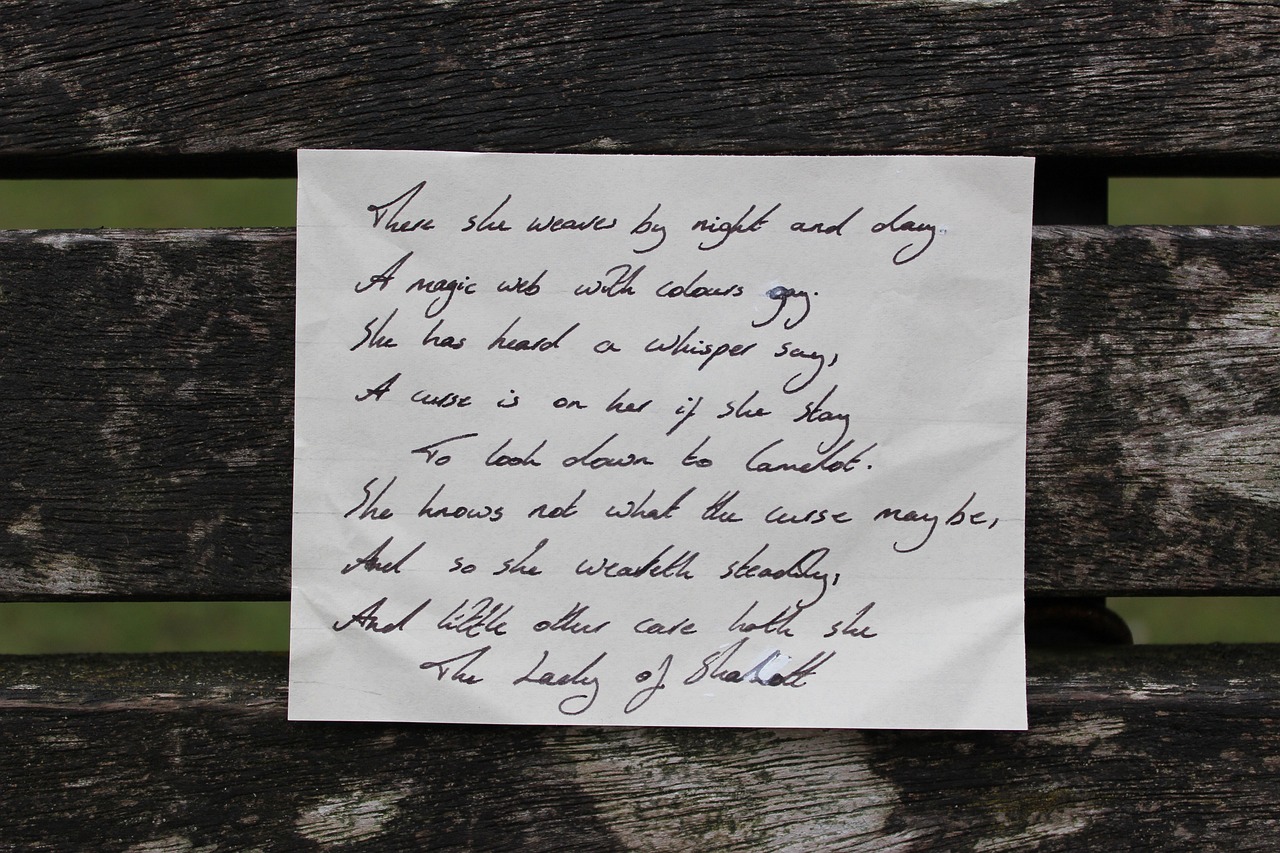
Types of Historical Documents
When diving into the world of historical research, one of the most fascinating aspects is the variety of documents that researchers can explore. Each type of document serves as a unique window into the past, offering insights that help us piece together the stories and events that shaped our world. From personal letters to official government records, the types of historical documents are as diverse as the histories they represent. Understanding these documents is crucial, as they not only provide information but also context, perspective, and sometimes even controversy.
To categorize these documents effectively, we can group them into several key types, each contributing uniquely to our understanding of historical contexts. Here are a few of the most significant categories:
- Letters and Correspondence: Personal letters often reveal intimate details about individuals' thoughts and feelings during specific historical periods. They can illuminate social norms, relationships, and the emotional climate of the time.
- Official Records: These include government documents, legal papers, and administrative records. They provide factual data about laws, policies, and decisions that influenced society.
- Newspapers and Periodicals: Newspapers are invaluable for understanding public opinion, major events, and daily life. They capture the zeitgeist, reflecting what was considered newsworthy at the time.
- Diaries and Journals: These personal accounts often provide a day-to-day perspective of historical events, allowing researchers to see how individuals experienced and interpreted their world.
- Photographs and Visual Media: Images can convey powerful narratives and emotions, serving as visual evidence of historical moments and cultural shifts.
Each type of document not only stands alone in its value but also interacts with others to create a more comprehensive picture of history. For instance, a letter written during a significant event can be paired with newspaper articles from the same time to provide a richer understanding of public sentiment and personal experiences. This interplay between different document types enhances our ability to analyze historical events from multiple angles, making our conclusions more robust.
Moreover, the significance of these documents extends beyond mere facts and figures. They often encapsulate the **human experience**—the joys, struggles, and complexities of life in different eras. For instance, a collection of letters exchanged between soldiers during a war can reveal not only the tactical aspects of the conflict but also the emotional toll it took on those involved. Similarly, government records might show the decisions made by leaders, but they often lack the personal stories of those affected by those decisions.
In conclusion, the types of historical documents are a treasure trove for researchers, each offering unique insights into the past. By examining these documents, we can gain a deeper understanding of historical contexts and the narratives that have shaped our present. As we continue to explore the vast array of available documents, we must remain aware of their individual contributions and the collective story they tell.
- What is the most important type of historical document? There is no single "most important" type; each serves a unique purpose and provides different insights into history.
- How do researchers determine the reliability of historical documents? Researchers assess reliability by considering the source, context, and corroborating evidence from other documents.
- Can digital documents be considered historical documents? Yes, digital documents, such as emails and social media posts, are increasingly recognized as valuable historical sources.

Primary vs. Secondary Sources
When diving into the world of historical research, one of the most crucial distinctions to grasp is the difference between primary and secondary sources. These two categories serve unique yet complementary roles in the quest to understand our past. Think of primary sources as the raw materials of history—firsthand accounts that provide direct evidence about an event, person, or period. Examples include diaries, letters, photographs, and official documents. These materials are like treasure chests filled with the authentic voices of those who lived through historical moments, offering insights that secondary sources simply cannot replicate.
On the other hand, secondary sources are the interpretations and analyses created by scholars and historians who examine those primary materials. They step back from the raw data to provide context, critique, and synthesis of the information gathered from primary sources. Biographies, history books, and academic articles fall into this category. They act as the interpreters of history, helping us to piece together the puzzle of the past. Without secondary sources, we might find ourselves lost in a sea of documents, unsure of how to connect the dots.
To illustrate this distinction further, let’s consider a practical example. Imagine you stumble upon a soldier's diary from World War II. This diary, filled with personal experiences and emotions, is a primary source. It allows you to hear the soldier's voice and understand his feelings during the war. Now, if you read a book analyzing the impact of World War II on soldiers’ mental health, that book is a secondary source. It uses the soldier's diary, along with many others, to draw broader conclusions about the psychological effects of the war.
Understanding the interplay between these two types of sources is vital for any researcher. Primary sources provide the evidence needed to support arguments and claims, while secondary sources offer the analysis that helps frame those arguments within a larger historical context. Researchers must navigate both to construct a well-rounded narrative of the past. In essence, primary sources are the foundation of historical research, while secondary sources are the framework that holds that foundation together.
| Source Type | Definition | Examples |
|---|---|---|
| Primary Source | Original materials from the time period being studied | Diaries, letters, photographs, official documents |
| Secondary Source | Interpretations and analyses of primary sources | Biographies, history books, academic articles |
In conclusion, the distinction between primary and secondary sources is not merely academic; it shapes the very way we understand history. By engaging with both types of sources, researchers can create a richer, more nuanced narrative of the past, allowing future generations to learn from the experiences and lessons of those who came before us.
- What is a primary source? A primary source is a firsthand account or original material from the time period being studied, such as letters or photographs.
- What is a secondary source? A secondary source interprets and analyzes primary sources, providing context and critique, such as history books or academic articles.
- Why are primary sources important? They provide direct evidence and insights into historical events, allowing researchers to understand perspectives from the time.
- Can a document be both a primary and a secondary source? Yes, depending on the context. For example, a diary can be a primary source for personal experiences but a secondary source if analyzed in a broader historical context.

Examples of Primary Sources
When we dive into the treasure trove of primary sources, we uncover a vivid tapestry of history woven from firsthand accounts. These sources are the raw materials that historians rely on to piece together the past, offering invaluable insights into the lives and experiences of individuals who lived through significant events. Think of primary sources as the first-hand witnesses to history, allowing us to grasp the emotions, thoughts, and realities of those who walked before us.
Some notable examples of primary sources include:
- Diaries and Journals: These personal records provide intimate glimpses into the daily lives and thoughts of individuals. For instance, the diary of Anne Frank offers a poignant perspective on life during the Holocaust, capturing her hopes and fears as she navigated a world filled with turmoil.
- Photographs: Images taken during historical events serve as powerful visual documents. A photograph from the Civil Rights Movement can evoke the emotions and struggles of the time, transporting us back to pivotal moments of change.
- Letters: Correspondence between individuals can reveal personal relationships and societal norms. Letters exchanged between soldiers during wartime often reflect their experiences, fears, and camaraderie, providing depth to our understanding of conflict.
- Government Documents: Official records, such as treaties or legislative acts, are crucial for understanding political developments. The Emancipation Proclamation is a prime example, marking a significant turning point in American history.
- Newspaper Articles: Articles from the time period being studied can shed light on public opinion and societal issues. A newspaper report on a major event, like the moon landing, captures the excitement and cultural significance of the moment.
Each of these examples serves as a window into the past, allowing historians to analyze and interpret the complexities of human experience. By examining primary sources, researchers can construct narratives that are not only factual but also rich in context and emotion. These sources help to paint a fuller picture of history, moving beyond mere dates and events to explore the stories of real people.
However, it’s essential to approach these primary sources with a critical eye. Context matters! Understanding the background of the author or creator, the circumstances under which the document was produced, and the audience it was intended for can significantly influence our interpretation. For instance, a soldier’s letter home might be filled with bravado, masking the true horrors of battle. Thus, while primary sources are invaluable, they require careful analysis to uncover the truths they hold.
In conclusion, primary sources are not just artifacts; they are the lifeblood of historical research. They allow us to connect with the past on a personal level, fostering a deeper understanding of the events and people that shaped our world. As we continue to explore these rich materials, we unlock the stories that resonate through time, reminding us of our shared humanity.

Examples of Secondary Sources
When diving into the fascinating realm of historical research, secondary sources play a pivotal role in shaping our understanding of the past. Unlike primary sources, which provide firsthand accounts, secondary sources interpret, analyze, and contextualize those original materials. They serve as a bridge, connecting raw historical data with a broader narrative that helps us make sense of events, trends, and figures. For instance, consider a biography of a significant historical figure. This work not only recounts the individual’s life but also interprets their actions and decisions within the larger framework of their time, offering insights that a simple diary entry or letter might not convey.
Another excellent example of a secondary source is a scholarly article that critiques a particular historical event. These articles often synthesize various primary sources, presenting a comprehensive analysis that can lead to new interpretations or understandings. They can also highlight the significance of certain events or figures that may have been overlooked in primary documents. For instance, a historian might analyze how the media portrayed a war, drawing from newspapers and journals from that period to illustrate changes in public perception over time.
Moreover, secondary sources can take many forms, including:
- Books: Comprehensive works that provide in-depth analysis and interpretation of historical events or periods.
- Documentaries: Visual narratives that combine interviews, archival footage, and expert commentary to tell a historical story.
- Critiques: Scholarly reviews that assess the validity and impact of primary sources or other secondary works.
- Encyclopedias: Reference works that summarize key facts and interpretations about historical topics.
These secondary sources are crucial for researchers as they not only provide context but also help to frame questions and guide further inquiry. By engaging with these materials, historians can challenge existing narratives and propose new interpretations, enriching our collective understanding of history. However, it's important to approach secondary sources with a critical eye, as the perspectives and biases of the authors can influence the narratives they present.
In summary, secondary sources are invaluable tools in the historian's toolkit. They allow us to step back and view the broader landscape of history, making connections and drawing conclusions that might not be evident from primary sources alone. As you explore historical research, remember the importance of these interpretative works—they're essential for piecing together the intricate puzzle of our past.
- What is the difference between primary and secondary sources?
Primary sources are original documents or firsthand accounts from the time period being studied, while secondary sources analyze, interpret, or summarize those primary materials. - Can secondary sources be biased?
Yes, secondary sources can reflect the author's biases and perspectives, which is why it's essential to evaluate them critically. - How do historians use secondary sources?
Historians use secondary sources to gain context, develop arguments, and interpret primary sources within a broader historical framework.

Methodologies in Documentary Analysis
When diving into the world of documentary analysis, it's essential to recognize that researchers employ a variety of methodologies to extract meaningful insights from historical documents. These methodologies can be broadly categorized into **qualitative** and **quantitative** approaches, each offering unique advantages and challenges. Understanding these methods is crucial for anyone looking to conduct thorough and effective historical research.
Qualitative methodologies focus on the **interpretation** of documents, emphasizing the context and nuances of the material. This approach often involves detailed readings of texts, allowing researchers to uncover underlying themes, biases, and perspectives. For example, when analyzing a **diary entry**, a qualitative researcher might explore the emotional weight of the words, the social context in which they were written, and the author's intent. This method is particularly valuable when dealing with **narrative sources**, where the richness of the text can reveal much about the historical period in question.
On the other hand, quantitative methodologies involve the use of statistical tools to analyze documents, often focusing on patterns and trends within large datasets. For instance, researchers might compile data from **census records** or **newspaper articles** to identify demographic shifts over time. This method allows historians to approach their research with a more empirical lens, providing a broader overview of historical phenomena. By employing software that can handle large volumes of data, researchers can identify correlations and make data-driven conclusions.
To illustrate the differences between these methodologies, let's look at the following table:
| Methodology | Focus | Examples |
|---|---|---|
| Qualitative | Interpretation of context and meaning | Diaries, letters, oral histories |
| Quantitative | Statistical analysis of trends and patterns | Census data, economic records, surveys |
Moreover, many researchers adopt a **mixed-methods approach**, integrating both qualitative and quantitative techniques to enrich their analysis. This method allows for a more comprehensive understanding of historical contexts, as it combines the depth of qualitative insights with the breadth of quantitative data. For instance, a researcher might analyze personal letters (qualitative) alongside statistical data from population studies (quantitative) to paint a fuller picture of a historical event.
In conclusion, the methodologies in documentary analysis are not one-size-fits-all. Each method offers different lenses through which to view the past, and the choice of methodology can significantly impact the outcomes of historical research. By understanding and applying these methodologies effectively, researchers can unlock the stories hidden within historical documents, shedding light on the complexities of our shared history.
- What is documentary analysis?
Documentary analysis is a research method that involves examining historical documents to extract meaningful data and insights about past events. - What are the main types of historical documents?
Historical documents can include letters, official records, newspapers, diaries, and photographs, among others. - What is the difference between primary and secondary sources?
Primary sources are original documents created at the time of the event, while secondary sources interpret or analyze primary materials. - How do qualitative and quantitative methodologies differ?
Qualitative methodologies focus on interpretation and context, while quantitative methodologies emphasize statistical analysis and patterns.

Challenges in Documentary Analysis
Documentary analysis is a powerful tool for historians, yet it comes with its own set of challenges that can complicate the research process. One of the most significant hurdles is bias, which can permeate historical documents, distorting the narrative and skewing interpretations. When examining a letter, for instance, the author's perspective, emotions, and societal context can influence the content. This bias may lead researchers to draw conclusions that do not accurately reflect the broader historical reality. Therefore, identifying and mitigating bias is crucial for ensuring the integrity of the research.
Another challenge lies in the accessibility of historical documents. Many vital records are locked away in archives or held by private collectors, making it difficult for researchers to obtain them. Furthermore, some documents may be in poor condition, illegible, or even lost to time, which can severely limit the scope of research. The availability of digital archives has improved access, but not all documents have been digitized, and researchers may still face barriers in retrieving essential materials.
Moreover, the sheer volume of information can be overwhelming. In the age of information overload, historians often find themselves sifting through vast amounts of data, trying to discern what is relevant to their research. This can lead to analysis paralysis, where the researcher feels stuck and unable to make progress. To combat this, it's essential to have a clear research question and a systematic approach to document analysis.
Lastly, the interpretation of documents poses its own set of challenges. Different historians may interpret the same document in various ways, influenced by their backgrounds, biases, and theoretical frameworks. This subjectivity can lead to conflicting narratives, which complicates the understanding of historical events. To navigate this, researchers must engage in critical discussions and consider multiple viewpoints, which can enrich their analysis and provide a more nuanced understanding of the past.
In conclusion, while documentary analysis is an invaluable method in historical research, it is not without its challenges. By recognizing and addressing issues of bias, accessibility, information overload, and interpretation, historians can enhance their research and contribute to a more accurate portrayal of history.
- What is documentary analysis? Documentary analysis is the examination of historical documents to extract meaningful data and insights about the past.
- What types of documents are used in historical research? Common types include letters, official records, newspapers, diaries, and photographs.
- How do bias and accessibility affect documentary analysis? Bias can distort interpretations of documents, while accessibility issues can limit the availability of crucial records for research.
- What are some strategies to overcome challenges in documentary analysis? Identifying bias, utilizing digital archives, maintaining a clear research focus, and engaging with diverse interpretations can help address these challenges.

Dealing with Bias
When diving into the world of historical research, one of the most significant hurdles you’ll encounter is bias. Bias can creep into historical documents in numerous ways, influencing how events are recorded and interpreted. It’s akin to trying to watch a movie through a tinted lens; the colors and details may be skewed, leading to a distorted perception of the plot. Recognizing and addressing bias is crucial for any researcher aiming to present an accurate depiction of the past.
So, how do we identify bias in historical documents? First, it’s essential to consider the context in which a document was created. Who wrote it? What were their motivations? Did they have any particular agenda? For instance, a letter written during a war might reflect the author's patriotic fervor, potentially overshadowing the complexities of the conflict. By scrutinizing the author's background and the circumstances surrounding the document's creation, researchers can uncover underlying biases that may color the narrative.
Moreover, it’s vital to cross-reference documents. Think of it as piecing together a puzzle; each document is a piece that contributes to the overall picture. By comparing multiple sources, researchers can identify inconsistencies and biases that might exist within individual documents. This method not only strengthens the validity of the research but also enriches the understanding of the historical context.
To effectively deal with bias in documentary analysis, consider the following strategies:
- Critical Reading: Approach each document with a questioning mindset. Ask yourself what the author might have left out or emphasized.
- Diverse Sources: Utilize a variety of documents from different perspectives. This diversity can help paint a more balanced picture.
- Peer Review: Collaborate with other historians to gain insights into potential biases you may have overlooked.
Ultimately, dealing with bias is not just about identifying it; it’s about understanding its implications on historical narratives. By being vigilant and employing critical thinking, researchers can navigate the murky waters of bias and strive towards a more nuanced understanding of history. Remember, history is not merely a collection of facts; it’s a tapestry woven from countless perspectives, and it’s our job as researchers to unravel its complexities.
- What is bias in historical documents?
Bias refers to a tendency to present information in a way that is partial or slanted, often influenced by the author's perspective or agenda. - How can I identify bias in a document?
Consider the author's background, the context of the document's creation, and compare it with other sources to spot inconsistencies. - Why is it important to address bias in historical research?
Addressing bias is crucial for ensuring the accuracy and reliability of historical narratives, allowing for a more comprehensive understanding of the past.

Accessing Historical Documents
Accessing historical documents can often feel like embarking on a treasure hunt, filled with both excitement and frustration. Imagine digging through layers of time, only to find that some of the most valuable pieces of history are locked away, hidden behind bureaucratic walls or in dusty archives that require special permissions. This challenge is not just about the thrill of discovery; it’s also about the very nature of historical research itself. Researchers must navigate a maze of restrictions, preservation concerns, and sometimes even the sheer physical distance from the documents they need.
One of the primary challenges in accessing historical documents is availability. Many documents are housed in specific institutions, such as national archives, libraries, or museums, which may have limited hours or require appointments. Additionally, some documents are simply not digitized, meaning researchers must visit these locations in person. This can be a significant hurdle, especially for those who are unable to travel due to distance or health reasons. Furthermore, the condition of documents can also pose a barrier; fragile items may not be readily accessible for handling, requiring special permissions or conditions for viewing.
Another factor that complicates access is legal restrictions. Copyright laws can restrict the use of certain documents, particularly those created in the 20th century or later. Researchers must be aware of these laws to avoid potential legal issues. Moreover, some documents may be classified or confidential, limiting their availability to only a select group of individuals. This can be particularly frustrating for historians trying to piece together a comprehensive narrative of the past.
To navigate these challenges effectively, researchers can employ several strategies:
- Networking: Building relationships with archivists and librarians can be incredibly beneficial. These professionals often have insights into the best ways to access documents and may even help researchers locate materials that are not readily advertised.
- Utilizing Digital Resources: With the advent of technology, many institutions are digitizing their collections. Researchers should explore online databases and digital archives, which can provide access to a wealth of information without the need for physical travel.
- Planning Ahead: Before visiting an archive, it’s wise to contact the institution to inquire about the availability of specific documents. This can save time and ensure that researchers can make the most of their visit.
In conclusion, while accessing historical documents presents a unique set of challenges, it is not insurmountable. By being proactive, utilizing available resources, and fostering connections within the archival community, researchers can unlock the doors to the past. The journey may be complex, but the rewards of uncovering hidden histories are well worth the effort.
Q: What types of historical documents are most commonly accessed by researchers?
A: Researchers often seek letters, diaries, official records, photographs, and newspapers, as these provide valuable insights into historical events and contexts.
Q: How can I find out if a document is accessible?
A: Contact the institution that holds the document directly. Many archives provide online catalogs or databases that indicate whether a document is available for public access.
Q: Are there any online resources for accessing historical documents?
A: Yes! Many libraries and archives have digitized their collections. Websites like the National Archives, Europeana, and the Library of Congress offer access to a variety of historical documents online.
Q: What should I do if I cannot access a document I need?
A: Consider reaching out to a librarian or archivist for assistance. They may provide alternatives or suggest similar documents that could help in your research.

The Impact of Technology on Documentary Analysis
In the ever-evolving landscape of historical research, the impact of technology on documentary analysis cannot be overstated. As we venture deeper into the digital age, researchers are discovering new avenues to explore and interpret historical documents. Gone are the days when scholars had to sift through dusty archives and stacks of paper. Today, technology has become a powerful ally, transforming how we access, analyze, and understand the past.
One of the most significant advancements has been the emergence of digital archives. These online repositories host vast collections of historical documents, making them accessible to a global audience. Imagine being able to scroll through letters penned by pivotal figures in history or view original manuscripts from the comfort of your home! Digital archives not only democratize access to information but also preserve fragile documents that might otherwise deteriorate over time. For example, institutions like the Library of Congress and British Library have digitized millions of documents, allowing researchers to explore primary sources that were once limited to physical locations.
Moreover, the rise of data analysis tools has revolutionized the way historians approach documentary analysis. These tools enable researchers to handle large volumes of data efficiently, extracting patterns and trends that might go unnoticed in traditional methods. For instance, text mining software can analyze thousands of documents in mere seconds, identifying themes, sentiment, and even biases across a dataset. This capability is akin to having a supercharged magnifying glass, allowing researchers to zoom in on details that could change the narrative of history.
However, while technology opens up exciting new possibilities, it also brings its own set of challenges. The vast amount of information available can be overwhelming, leading to what some might call information overload. Researchers must develop skills not only in analyzing documents but also in curating and prioritizing the information they encounter. It’s a bit like trying to find a needle in a haystack, but with the right tools and strategies, it can be done effectively.
In addition, the reliance on technology raises questions about authenticity and preservation. Digital documents can be altered, and the ease of access can lead to misinterpretations. Researchers must remain vigilant, ensuring they verify the credibility of their sources and understand the context in which these documents were created. This vigilance is crucial as it helps maintain the integrity of historical research.
In summary, the integration of technology into documentary analysis has created a paradigm shift in historical research. It offers unprecedented access to information and enhances analytical capabilities, but it also requires researchers to adapt and refine their methodologies. As we continue to embrace these advancements, the future of historical research looks brighter than ever, promising deeper insights into the complexities of our past.
- What are digital archives? Digital archives are online collections of historical documents that allow users to access and explore primary sources without needing to visit physical libraries or archives.
- How do data analysis tools assist researchers? Data analysis tools help researchers manage and interpret large datasets, allowing them to uncover patterns and insights that might be missed through manual analysis.
- What challenges do researchers face with technology? Researchers may encounter information overload, issues with authenticity, and the need for new skills to effectively navigate and analyze digital documents.

Digital Archives and Databases
In today's fast-paced world, the way we access and analyze historical documents has undergone a revolutionary transformation, primarily due to the advent of digital archives and databases. These platforms have not only made it easier for researchers to locate critical documents but have also democratized access to history, allowing anyone with an internet connection to dive into the past. Imagine being able to sift through thousands of documents from the comfort of your own home—this is the power that digital archives bring to the table.
Digital archives serve as vast repositories of historical documents, ranging from government records to personal letters, and even multimedia resources. One of the most significant advantages of these digital platforms is their ability to preserve fragile documents that might otherwise degrade over time. For instance, consider a 200-year-old letter; in a physical archive, it might be kept under strict conditions to prevent deterioration. However, once digitized, it can be shared with researchers and enthusiasts worldwide without the risk of damage.
Some notable examples of digital archives include:
- The National Archives (UK): A treasure trove of government documents, military records, and more.
- Chronicling America: A project by the Library of Congress that provides access to historic American newspapers.
- Europeana: A digital platform that gives access to millions of digitized items from European cultural heritage institutions.
These platforms not only enhance accessibility but also allow for advanced search functionalities. Researchers can use keywords, dates, and even specific phrases to find relevant documents quickly. This is a far cry from the tedious process of rifling through physical archives, where one might spend hours or even days searching for a single piece of information. The efficiency of digital archives means that researchers can focus more on analysis rather than the hunt for documents.
Moreover, the integration of data analysis tools within these digital platforms is a game-changer. With software that can analyze large volumes of text, researchers can identify patterns, themes, and even sentiments within historical documents. This capability not only enriches our understanding of the past but also opens up new avenues for research that were previously unimaginable. For example, text mining can reveal how language has evolved over time or how public sentiment shifted during significant historical events.
In summary, digital archives and databases are reshaping the landscape of historical research. They provide unprecedented access to a wealth of information, preserve fragile documents, and facilitate advanced analytical techniques. As we continue to embrace technology, the future of documentary analysis looks brighter than ever, promising to uncover hidden narratives and broaden our understanding of history.
- What are digital archives?
Digital archives are online repositories that store and provide access to historical documents, images, and multimedia resources. - How do digital archives enhance research?
They improve accessibility, allow for advanced search capabilities, and integrate data analysis tools to facilitate deeper insights into historical data. - Are all historical documents available digitally?
No, while many documents have been digitized, some may still exist only in physical form due to preservation concerns or lack of funding for digitization.
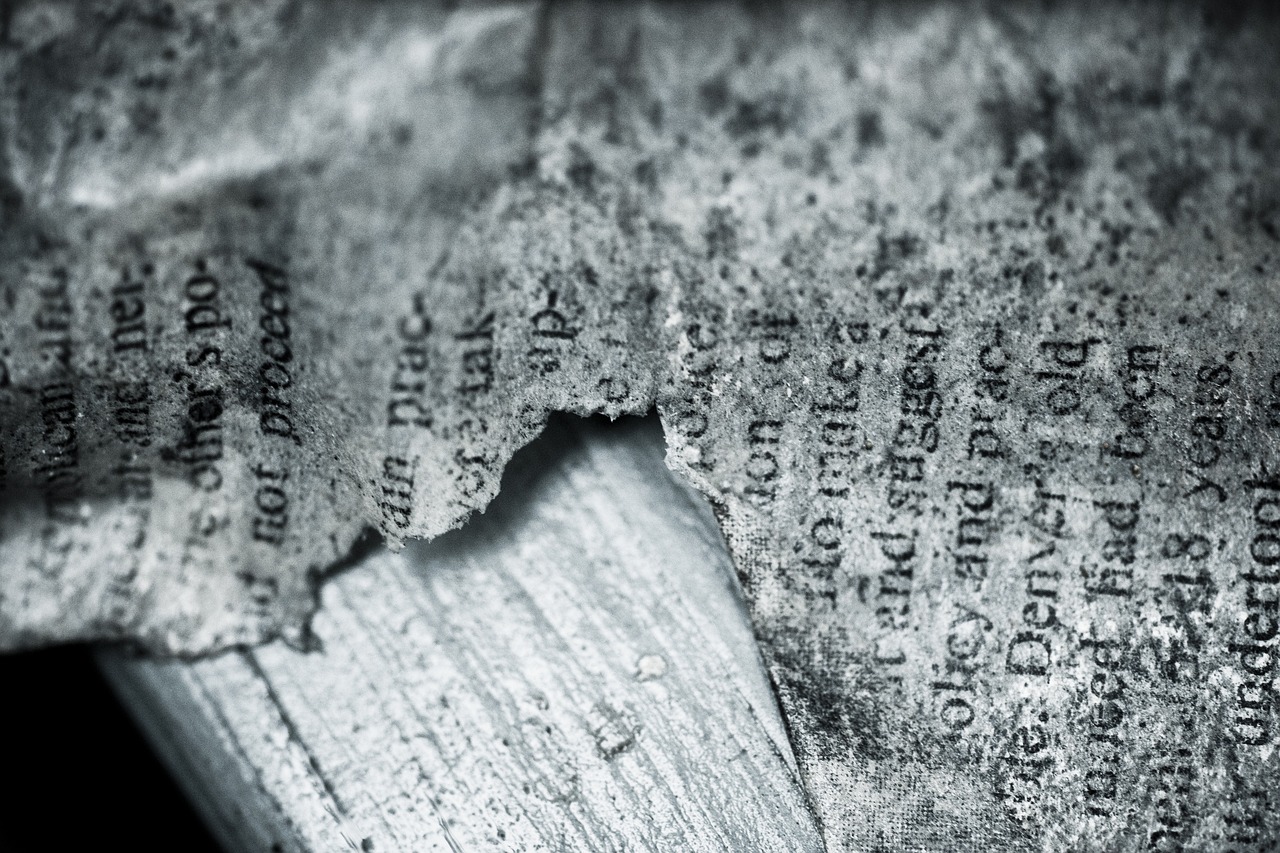
Data Analysis Tools
In the realm of historical research, have revolutionized the way researchers interact with and interpret vast amounts of information. Gone are the days when historians would spend countless hours sifting through stacks of paper, trying to piece together narratives from fragmented data. Today, with the advent of technology, researchers can employ sophisticated software that not only simplifies the process but also enhances the accuracy of their findings.
One of the primary advantages of using data analysis tools is their ability to handle large datasets efficiently. Imagine trying to analyze hundreds of letters from a historical figure; without the right tools, it can feel like searching for a needle in a haystack. However, with software designed for text analysis, researchers can quickly identify patterns, themes, and anomalies within these documents. This capability allows historians to draw more nuanced conclusions about the past.
Some popular data analysis tools used in documentary analysis include:
- NVivo: This qualitative data analysis software helps researchers organize and analyze unstructured data, such as interviews, open-ended survey responses, and historical texts.
- Atlas.ti: Similar to NVivo, Atlas.ti offers a platform for qualitative analysis, allowing users to code data and visualize connections between different pieces of information.
- Excel: While primarily known as a spreadsheet application, Excel can be a powerful tool for quantitative analysis, enabling researchers to perform statistical analyses on numerical data extracted from historical records.
- R and Python: These programming languages offer extensive libraries for data manipulation and visualization, making them ideal for researchers who want to perform complex analyses or create custom scripts for their specific needs.
Moreover, the integration of machine learning algorithms into data analysis tools is opening new frontiers in historical research. By training models on existing datasets, researchers can uncover hidden trends and make predictions about historical events that were previously difficult to discern. For instance, sentiment analysis can be applied to letters and diaries to gauge public opinion during significant historical moments, providing a richer understanding of societal attitudes.
While these tools significantly enhance research capabilities, it's essential to remember that they are not a replacement for critical thinking and historical context. The interpretation of data must still be grounded in a solid understanding of the historical framework. Thus, the role of the historian remains crucial in ensuring that the narratives constructed from data analysis are accurate and meaningful.
In a world where data is abundant, the ability to analyze it effectively is more important than ever. As historians embrace these tools, they not only improve their research processes but also contribute to a deeper and more comprehensive understanding of our past.
- What are data analysis tools? Data analysis tools are software applications designed to help researchers collect, organize, and analyze data efficiently, often providing insights that would be difficult to obtain manually.
- How do data analysis tools benefit historical research? They streamline the research process, allow for the analysis of large datasets, and uncover patterns that enhance the understanding of historical contexts.
- Can I use free data analysis tools? Yes, there are several free and open-source tools available, such as R and Python, which can be powerful for data analysis without the need for expensive software.
- Do I need technical skills to use data analysis tools? While some tools are user-friendly and designed for those without technical backgrounds, a basic understanding of data analysis concepts can significantly enhance your effectiveness.
Frequently Asked Questions
- What is documentary analysis in historical research?
Documentary analysis is a method used by historians to examine historical documents to extract meaningful data. It focuses on understanding the context, purpose, and content of various documents to piece together a more accurate picture of the past.
- What types of documents are commonly analyzed?
There are several types of documents that historians analyze, including letters, official records, newspapers, diaries, and photographs. Each type offers unique insights and contributes to a richer understanding of historical contexts.
- What is the difference between primary and secondary sources?
Primary sources are original documents created during the time under study, such as diaries and photographs, providing firsthand accounts of events. Secondary sources, like biographies and critiques, analyze and interpret those primary materials, helping to shape historical narratives.
- What methodologies are used in documentary analysis?
Researchers use various methodologies, including qualitative and quantitative methods, to analyze documents. Qualitative methods focus on understanding the meaning and context of documents, while quantitative methods might involve statistical analysis of data extracted from those documents.
- What challenges do researchers face in documentary analysis?
Researchers often encounter challenges such as bias in historical documents and limited access to essential records. Identifying bias is crucial for accurate interpretations, and overcoming access issues may require persistent efforts to locate and retrieve documents.
- How can technology aid in documentary analysis?
Advancements in technology have revolutionized documentary analysis by providing digital archives and databases that enhance research capabilities. Tools for data analysis also allow researchers to interpret large volumes of historical data more effectively.
- What are digital archives and why are they important?
Digital archives are online collections of historical documents that researchers can access easily. They are important because they broaden the availability of resources, allowing historians to explore a wide range of materials that may not be physically accessible.
- What data analysis tools are available for researchers?
There are various data analysis tools available, such as software for text analysis and data visualization. These tools help researchers organize and interpret large sets of historical data, making it easier to draw meaningful conclusions from their analyses.











